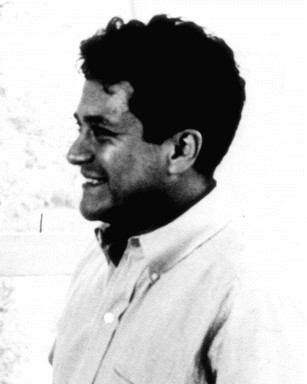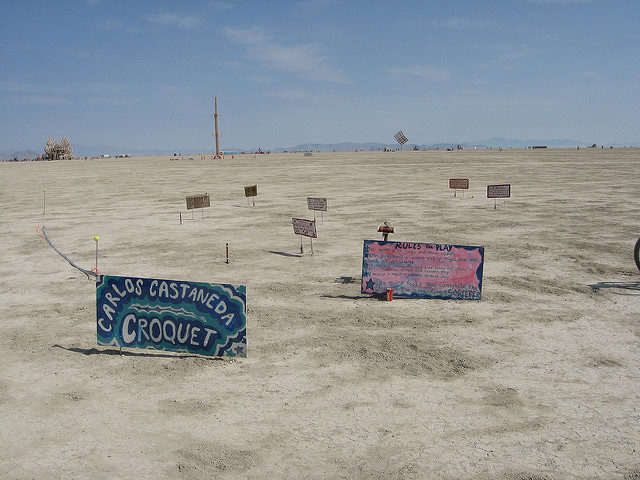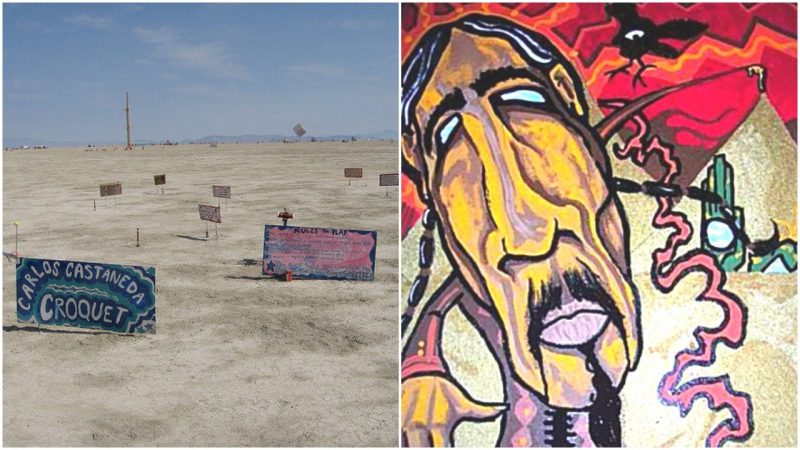Impossible as it may seem to us now, when world leaders communicate on twitter and cultural “influencers” pay staffs to curate their Instagram presence, in the 1960s and 1970s there was a writer and philosopher who lived in seclusion, declining all interviews, despite the fact that everyone was intensely curious about him.
When Carlos Castaneda’s book The Teachings of Don Juan was published in 1968, he introduced the world to the shaman Don Juan, capable of fighting witchcraft, curing with plants, and changing from human to raven.
Or was he?
The existence of Don Juan has been disputed altogether, scorned as a product of Castaneda’s imagination and usage of psychoactive drugs. The writer himself, though, when he did choose to communicate, never denied that Don Juan lived.
In 1960, Carlos Castenada traveled to Nogales, Arizona, to conduct research into Native American traditional medicine, which was part of his doctoral thesis in the field of Social Anthropology at UCLA. He said he met Don Juan, a Yaqui Indian, at a bus depot, and was invited to his home in Sonora, Mexico. He became a frequently returning guest to Don Juan’s home over the following five years, but what truly happened during that time is unknown. Castaneda claimed that over the years he became an apprentice of the self-proclaimed sorcerer.

The known facts are as follows. Castaneda was born in Cajamarca, Peru, in 1925 and moved to the United States when he was 25. He became a naturalized citizen 30 years later and enrolled at UCLA where he earned his BA in 1962, and then his Ph.D. in 1973.
Interestingly, much of Castaneda’s life remains uncertain, his mystery-filled world triumphing over his life as an academic. Facts about his private life were also unclear and contradictory; according to the memoirs of Margaret Runyan, who claimed to be his wife, he may have been married back in the 1960s in Mexico, whereas according to his death certificate, which stated that Castaneda had not ever married in his lifetime, he either divorced her or was indeed never wed at all.

He wrote a series of books based on his experience as an apprentice to Don Juan, and they were all published by the University of California Press, although his work was classified as fiction rather than academic ethnography by many critics. Castaneda wrote about the shaman Juan Matus, a pseudonym created by Casteneda to protect the true identity of his teacher.
Juan Matus was a “nagual”: a human, who, according to Mesoamerican folk religion, possesses the power to change his physical form into an animal, and who descends from a long lineage of Toltec sorcerers. The term Toltec describes a fellowship of wizards that was created more than 10,000 years ago, somewhere in Southern Mexico, and its purpose was to protect spiritual workers and healing with powerful plants. The term “nagual” was only ever used in Castaneda’s works.
During his five-year apprenticeship with Juan Matus, “the Man of Knowledge,” as he refers to him, Castaneda went through different shamanic rituals that were considered “voyages” with psychoactive drugs. There were two separate plants that challenged the personality in different ways and brought about very different experiences for Castaneda. One was the Peyote Cactus and the other was called Datura, commonly known as jimson weed, or scientifically, Datura stramonium.

The anthropologist had individual experiences monitored by his teacher, as well as collective rituals with other shamans. As described by Juan Matus in the book, peyote is the more “honest and pure” drug, which will immediately connect with your spirit or reject you, while the Datura is more complex and tricky and might enchant you at first, making you love and enjoy her, and then suddenly attack you and refuse you, making your mind and body sick. Castaneda experienced a lot of suffering, happiness, and ultimately spiritual maturity during the five years spent with Don Juan.
Castaneda was also a witness to his teacher’s transformation into a raven, and to Don Juan’s “battles” with other sorcerers while they were in their animal shape. He also experienced magic, lucid dreaming, and different spiritual encounters and voyages.

Don Juan never permitted Castaneda, or anyone for that matter, to take a photograph of him. Although the books are a perfect story for movie producers, a movie has never been an option because …well, who would be brave enough to take the role of Juan Matus? Of course, this is probably not the only reason, as Hollywood brings much magic into the world as well as creates its own kind, but it might be one of the reasons.
Although his work made Castaneda a well known academic and cultural figure, after 1973, he completely vanished from public view, despite the many requests for interviews and videos. He lived in his house in Los Angeles along with three fellow anthropologists and students at UCLA: the stalker Taisha Abelar; the dreamer Florinda Donner-Grau; and the Nagual woman Carol Tiggs, who were also apprentices of Don Juan, along with a few others.

about Castaneda and the Toledo culture Authot;Guilermo Marin Ruiz CC BY3.0
When Castaneda died in 1998, very few people were notified of his death. He was cremated and his ashes sent to Mexico. Right after his death, his companions, Patricia Partin, Amalia Marquez, Florinda Donner-Grau, and a few other followers of Castaneda, told their families and friends that they were about to go on a long journey. After several weeks, the car that belonged to Partin was found abandoned in the Death Valley, while her skeleton was discovered in 2006 by two hikers in the Panamint Dunes area. Her identity was discovered by DNA testing, but her death was ruled as undetermined.
Both Partin and Abelar had written books about their apprenticeships with Juan Matus from a more feminist perspective. Florinda Donner-Grau later became an expert on the Yanomami culture, publishing books about lucid dreaming and indigenous healing. Carol Tiggs, who today works as a consultant for Cleargreen, a for-profit organization created by Castaneda, speaks at workshops about sorcery, indigenous plants, and shamanism throughout the world.
Whether Don Juan existed or not remains a mystery, as does his experience of being a student of a “Man of Knowledge”; whether he encountered a shaman who guided him through drug experimentations or not is something one can choose to believe in, as is whether the Toltec sorcerers were real or just a part of Castaneda’s imagination. Maybe Juan Matus still lives somewhere in Mexico; of course, this depends entirely on the mind of the reader.
